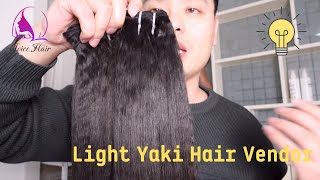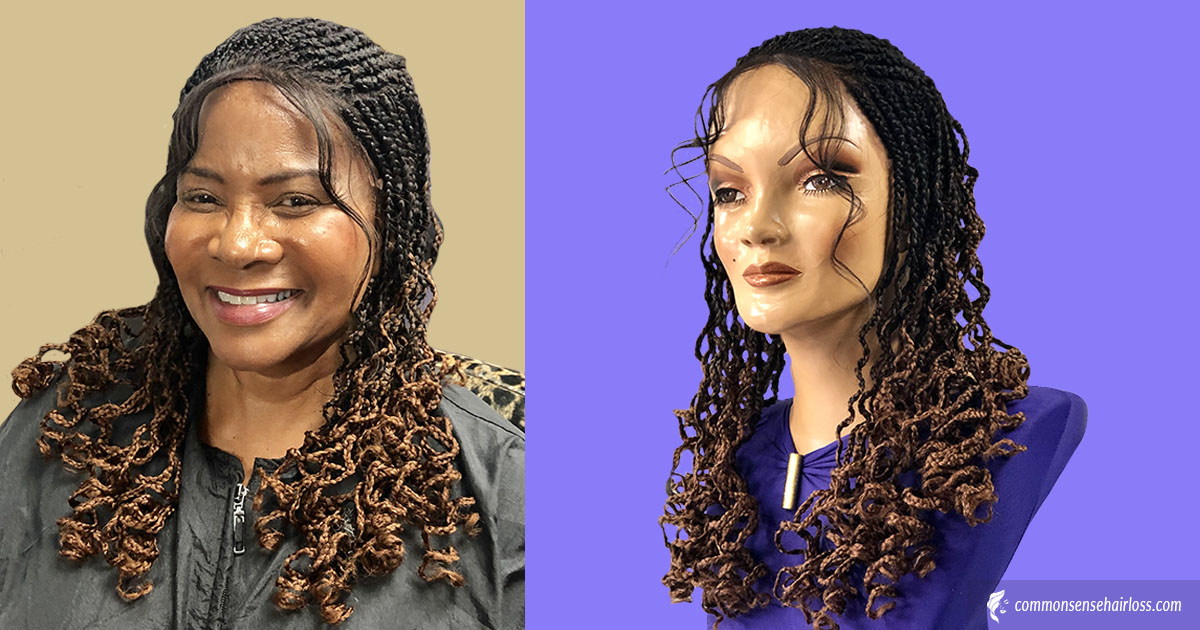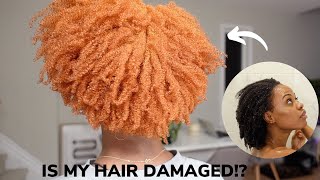How To Choose The Right Relaxer For Your Hair Type
Contents:
- STEP 1: What is your hair texture?
- STEP 2: What strength of relaxer should I use?
- STEP 3: Always, Always, ALWAYS do a strand test
- STEP 4: Lye or No-Lye?
- Final thoughts
If you are like me, you chemically relax your hair. In doing so, you want to make sure you have the very best relaxer for your hair. Most people think that picking out a relaxer is as easy as selecting the box with the prettiest head of hair on the cover. Not so. There are a lot of things to be considered when picking out your relaxer.
In broad terms, the things to pay attention to are: Your hair type, the ingredients in the relaxer, properties of the formula, and, most importantly, the results that you want to achieve.
The best relaxer FOR YOU, will give you the results you desire, which for most is a healthy scalp and tresses. The relaxer does this by being gentle on your scalp and strands while straightening it.
STEP 1: What is your hair texture?
In order to pick the best relaxer, you need to know the type of hair you have on your head. In this instance the 4a 4b, 3c scale will not help. You need to find out the thickness of your individual strands relative to other people’s.
If you have thick, wiry strands then you have coarse hair. Thin, smooth strands are deemed as a fine texture while anything between the two is a medium or normal texture. Bear in mind that this speaks to the texture of the individual strands of hair and not the overall thickness of your entire head of hair.
To figure out the thickness of your strands, it might be a good idea to compare it to the strands of people you know. Men, as a general rule, tend to have thicker coarser strands than women so to start with you can compare a strand of your hair with one from a man you know. It is best to compare your strands to those with a similar texture to yours to avoid compounding variables. You may very well find that you have thick overall hair but super fine individual strands.
Do not skip this step, it is needed to pick the correct strength formula for your hair type.
STEP 2: What strength of relaxer should I use?
Relaxers come in three strengths: mild, regular, and super. If you have fine hair, then you should use the mild formula; if you have coarse hair, then you may want to do a strand test with the regular formula and if you don’t get the results you want, then try the super formula. Be careful in thinking that just because you have thick hair, you need a super strength relaxer.
Depending on the formula of the relaxer you are using, you may be able to get your desired results with the mild formula of one brand yet require the regular or super formula of another brand. That brings me to my next point:
STEP 3: Always, Always, ALWAYS do a strand test
You will find that strand tests are recommended in most at home box hair colors and also found in relaxer instructions, but rarely do those using relaxers perform them. A strand test before a relaxer is important to perform because it helps avoid potentially dangerous allergic reactions of course but that aside, it also helps you figure out the strength of chemical required for your hair as well as how long you should keep it on to achieve the desired results.
Somebody with fine strands may need 8-10 minutes to get a texlaxed effect and just 5 minutes more would relax it bone straight. Figuring out the timing helps you know how much work time you really have with the chemical in you hair. This in turn will help you make the decision to perhaps apply the chemical in sections, rinsing and neutralizing each section thoroughly before applying it to the next section.

To perform a strand test do the following:
1. Going objectively by reviews or subjectively by word of mouth from other relaxed people, narrow down the brand you wish to try. Pick the relaxer strength according to your hair’s texture as mentioned before. You will notice that the relaxer will include a timing chart in the instructions. Pick the lowest time listed for your strand test. There will be time to correct this later if the time is not enough.
2. Separate a very small section of hair in an inconspicuous area. You may want to avoid the nape area because many of us have softer, finer strands with a looser texture at the nape.
3. Pin the rest of your hair out of the way and protect the surrounding hair with petroleum jelly* to avoid processing it.
4. Apply a small amount of the relaxer and process for the recommended time using the timing chart on the instructions. You can reduce the time by a third or more if you are looking to texlax instead of relaxing bone straight.
5. Rinse and neutralize the section of hair and assess the results. Are you happy with the texture and degree of curl reduction or straightening?
6. If you are not satisfied, then reapply the relaxer for a few more minutes according to the timing chart provided in the relaxer box. If you have already used the highest timing for this particular strength of relaxer, then you have to repeat the strand test on a new piece of hair with the next strength up.
7. If you are happy with the results then test a individual strand of the processed hair by gently stretching it. If it breaks easily, the hair is over-processed and you have to reduce your timing. If it is satisfactory then you can go ahead and relax the rest of your hair. Congratulations, you now know the strength of formula and timing that your hair needs for that particular brand. Now stick with that brand and strength for all your subsequent touch ups.
8. Keep the little processed strand of hair in a braid or twist so that you can remember to avoid getting relaxer on it again. Remember to cover this strand in petroleum jelly* as further insurance before relaxing the rest of your hair.
9. Avoid changing your brand if you don’t have to. Pick a brand and stick with it. If you ever need to change the brand in the future, or you notice that your regular brand has changed its formula then you will have to go through the process of performing a strand test all over again.
STEP 4: Lye or No-Lye?
Traditionally relaxers come in either the “No Lye” or “Lye” formulas. Lye relaxers will usually give you straighter hair, but they also have the capacity to do more damage. Sodium hydroxide is the chemical used in lye relaxers while no lye relaxers use calcium hydroxide or guanidine hydroxide.
If not used with adequate protection, Lye can cause chemical burns on the scalp. But, when used correctly, it can leave the hair straight, moisturized and soft. No lye relaxers are typically milder than lye formulas, as they have a lower pH balance but the are also prone to leaving calcium deposits on the hair shaft which make it more difficult for moisture to penetrate.
If you have sensitive skin, then a no-lye formula is for you, otherwise you can give a lye product a try to see if you hair does well with it. “No base” formulas claim to be less damaging to the scalp, but a petroleum base is always advised as an extra precaution regardless.
The following relaxers are the highest rated relaxers on the market and are available in both Lye and No lye formulas. They are Affirm, Mizani, ORS, Phyto, and African Pride (respectively).
Final thoughts
Armed with all this knowledge you should be able to pin down the right relaxer for your hair’s unique texture and you can move on to other aspects of maintaining and growing your hair while keeping it strong and healthy.




